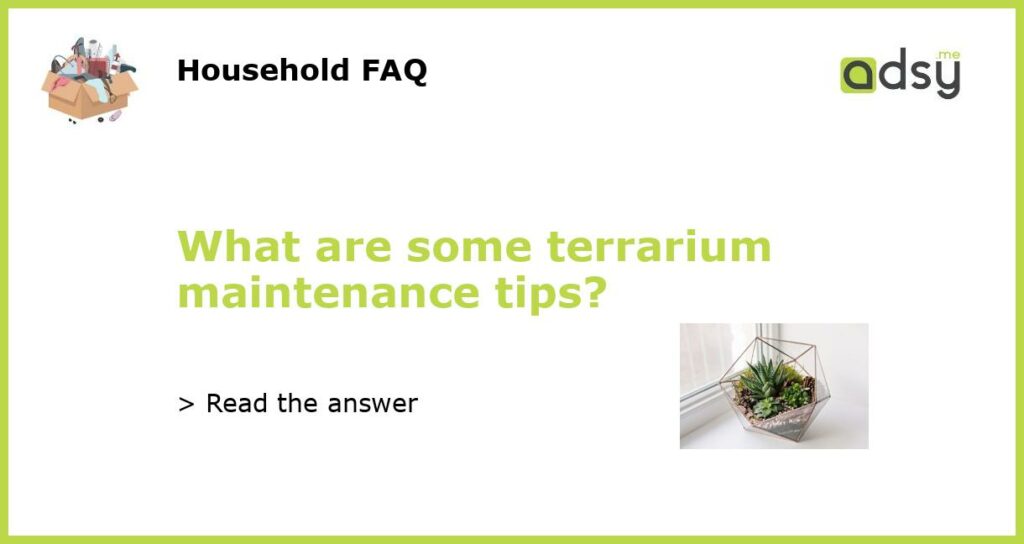Terrarium Maintenance Tips: Keep Your Miniature Ecosystem Thriving
Terrariums are captivating miniature ecosystems that bring a touch of nature into your indoor space. Whether you have a closed or open terrarium, proper maintenance is essential for its long-term health. With these terrarium maintenance tips, you can ensure that your plants thrive and your terrarium remains a beautiful centerpiece in your home.
Maintain Proper Lighting
Choosing the right lighting conditions for your terrarium is crucial for the optimal growth of plants. Most terrariums thrive in bright but indirect sunlight. Placing them near a north or east-facing window is ideal to provide them with enough light. However, if you have a closed terrarium, be cautious of placing it in direct sunlight as the enclosed environment can magnify the heat and harm your plants. If natural sunlight is limited, consider using artificial lights with specific wavelengths to mimic natural sunlight.
Water Your Terrarium Wisely
Proper watering is vital for the health of your terrarium. Different types of terrariums have different watering requirements. Closed terrariums, with their self-contained environment, require less frequent watering compared to open terrariums. In a closed terrarium, the moisture from the plants and soil gets recycled, creating a humid and self-sustaining environment. Succulents, cacti, and air plants, which are commonly found in open terrariums, require more frequent watering. Ensure that you do not overwater or underwater your terrarium, as both can be detrimental to the plants. Use a spray bottle or a watering can with a narrow spout to water the plants evenly.
Prune and Maintain Plant Growth
Regular pruning is essential to maintain the desired shape and size of plants in your terrarium. Over time, certain plants may grow taller or spread more than desired, creating an imbalanced environment. Trim back excess growth using clean, sharp scissors or pruning shears to maintain the aesthetics and health of your terrarium. Additionally, removing dead or yellowing leaves will prevent the spread of diseases and maintain the overall appearance of the terrarium.
Monitor Humidity and Ventilation
Proper humidity levels and ventilation are crucial for the long-term health of your terrarium. Closed terrariums naturally retain moisture, creating a humid environment. If you notice excessive condensation or a musty smell, it may indicate poor ventilation. Open the lid of your closed terrarium for a short period to allow fresh air circulation. For open terrariums, it is essential to monitor the humidity levels. If the air becomes too dry, consider misting the plants or placing a small dish of water near the terrarium to increase humidity.
Keep an Eye on Pests and Diseases
Even in a controlled environment like a terrarium, pests and diseases can find their way in. Common pests that can infest your terrarium include aphids, mites, and fungus gnats. Regularly inspect your plants for any signs of infestation such as webs, discoloration, or wilting leaves. If you detect pests, isolate the affected plants and treat them accordingly. As a preventive measure, you can rinse new plants thoroughly before introducing them to the terrarium. Additionally, avoid overwatering, as it can lead to root rot and other diseases.






